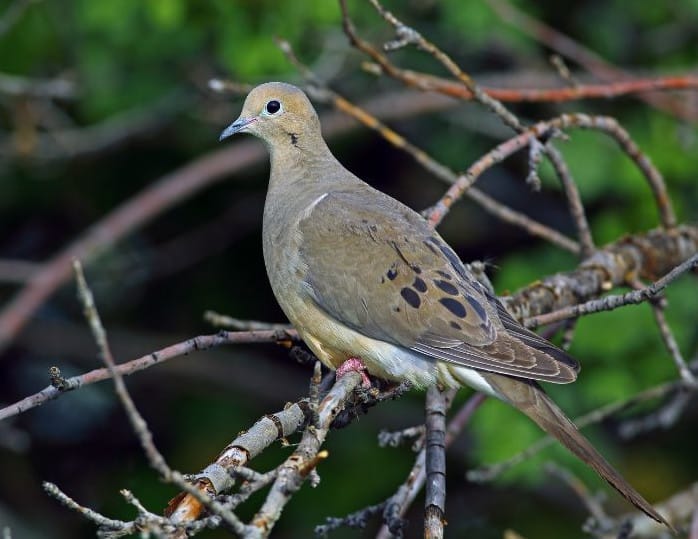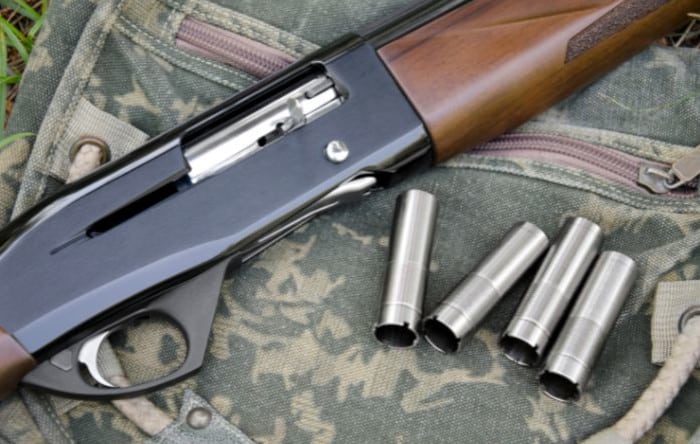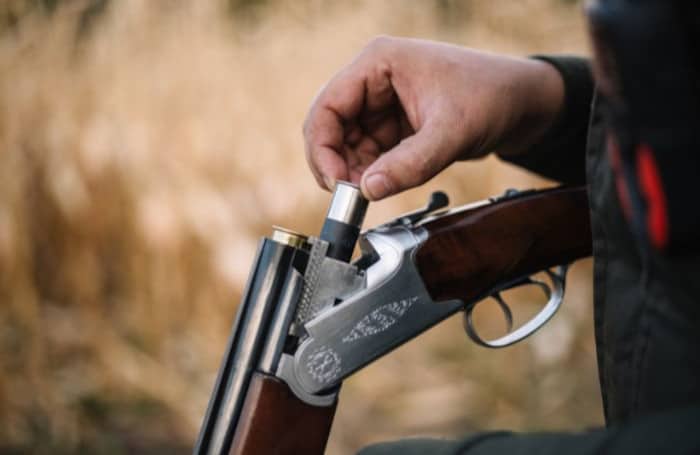As dove hunting season gets closer and closer, dove hunting fans start to drool as they know that summer is almost over and the fall hunting seasons are coming soon. Dove hunters start stocking up on shotgun shells, getting the dove decoys ready, and shotguns are oiled up. Just before dove season is usually a busy time at my day job, and many of the questions I field during that time are related to the topic of what to wear dove hunting. This is especially common with hunters being introduced to the annual September tradition of wing shooting for doves.
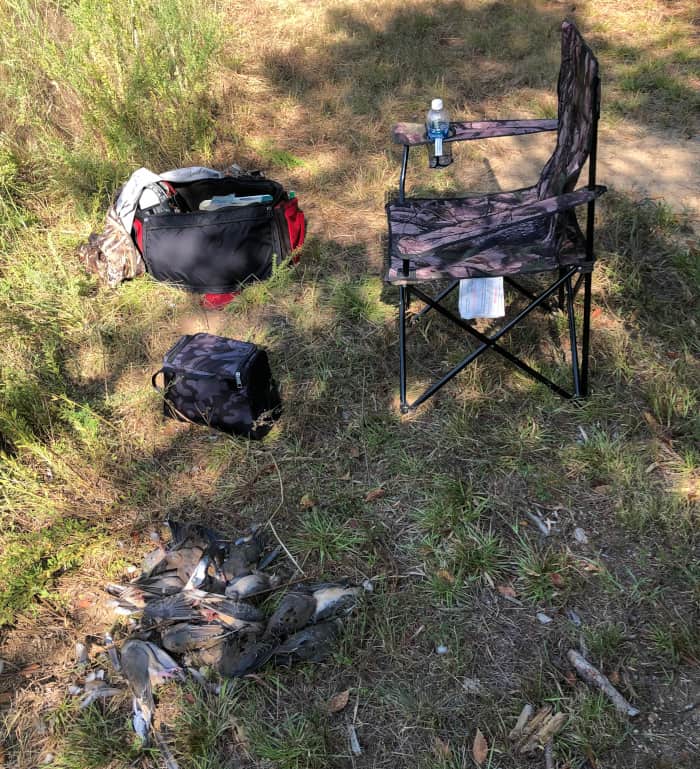
In most states, dove season is the first of the migratory game bird hunting seasons, so, for most hunters, it’s the first time shouldering a shotgun in quite a while. And doves are no easy target, as most wing shooting magazines estimate that the average shotgunner hits one dove for every five shots taken. So if you shoot better than this average on opening day, consider yourself a pretty good shotgunner.
The clothing worn while dove hunting varies depending on the location, climate, and personal preference. Still, there are a few key items that are recommended for all dove hunters. In this article, I’ll discuss what to wear dove hunting, including the essential clothing items and accessories that will make your hunting trip more comfortable and, maybe, even more productive.
When discussing dove hunting apparel, the gar is typically broken down by the following items:
- Dove Hunting Shirt
- Dove Hunting Pants
- Dove Hunting Hat
- Dove Hunting Vest
- Dove Hunting Footwear
In this article, I will review each of these items and discuss their roles and how they can help you bag more doves this season.
Dove Hunting Shirt

To be completely honest, you can hunt doves in almost any shirt, but shirts made specifically for dove hunting typically have the following features:
Designed To Keep a Hunter Cool During Warmer Temperatures
Dove hunting shirts are designed to keep a hunter cool during warmer temperatures while still providing excellent protection from the elements.
Lightweight hunting shirts made of fabrics that allow air and moisture to pass through them can help hunters avoid becoming too hot, sweaty, or uncomfortable in the field. A lightweight and breathable dove hunting shirt is critical for staying cool when out on a hunt in warm climates.
The fabric should also be quick-drying and wick away sweat so that you remain comfortable throughout the day. Whether it’s an early morning hunt or a late afternoon one, having a durable yet lightweight shirt will ensure that you stay as comfortable as possible without sacrificing performance.
Built In UV Protection
Hunting in warmer weather situations also means potential prolonged exposure to the sun. When I first started dove hunting as a kid, I refused to wear sunscreen and almost always ended up with a bad sunburn.
Since most people don’t want to get sunburned, having a camo shirt with built-in UV protection is an excellent option. It is nearly impossible to avoid all sun exposure while dove hunting, but every little bit helps. Take it from someone who is dealing with skin cancer issues now, in part due to my unwillingness to wear sunscreen as a child.
If you’re shopping for a new hunting shirt, consider one with the latest technologies that offer lightweight fabrics and all-day comfort while providing maximum coverage against harmful UVA/UVB rays.
Bug Proof
With hunting in warmer temperatures comes a hunter’s least favorite friend: bugs. Unfortunately, very few factors can make a warm weather hunt unpleasant as quickly as mosquitoes and fly bites.
A good dove hunting shirt needs to be thick enough to repel bugs or at least stop them from biting through the shirt. I have a few ultra-thin hunting shirts made from extremely thin polyester, so they are nice and light. But unfortunately, they are not thick enough to keep mosquitoes from biting through the material.
A quality hunting shirt should have an outer layer made with a lightweight fabric that is not only waterproof but also highly resistant to bugs. Look for materials such as polyester, nylon, or lycra blend fabrics that offer excellent coverage against insects without sacrificing comfort in hot weather.
Another option is to look at a pretreated hunting shirt with an additional bug-proof coating to give extra protection against mosquitoes and other biting bugs.
Camouflage Patterns Help
When it comes to dove hunting, having the proper clothing and headwear is a practical option that increases the odds of success. Camouflage patterns can be a game-changer when trying to outsmart these birds. A good pattern helps break up your outline and position so you can get within shotgun range of doves without being noticed.
However, while recommended, camouflage clothing is not required for dove hunting. It certainly helps, but it is not a requirement. Over the years, I’ve seen plenty of hunters wearing blue jeans and dark-colored shirts who racked up a limit of doves before noon.
I find camo clothing to be very helpful when chasing doves because they have excellent vision. Doves seem to key in on movement or anything that looks out of place. Being able to blend into the terrain or surroundings can be the difference between a dove coming into shotgun range or staying out of range.
Most camo patterns will work, even a combination of different patterns between a hunting shirt and hunting pants. Different types of camouflaged clothing come with different designs, colors, and textures, all designed to blend into the background and leave no trace of your presence.
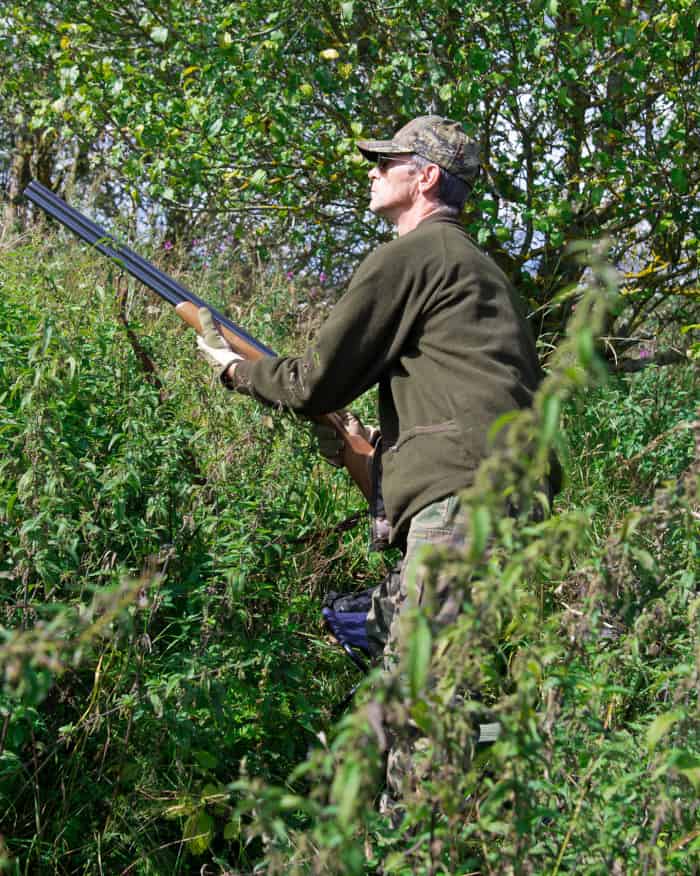
Long And Short Sleeve Options
When choosing a shirt for dove hunting, there are two main options: long sleeve and short sleeve. Both have their own advantages and disadvantages.
Long sleeve shirts offer extra protection from the elements, such as wind, sun, and bugs. They also provide warmth in cooler weather but can be uncomfortable in warmer temperatures or during strenuous activity.
Short sleeve shirts are great for staying cool when it’s hot out, but they don’t protect your arms, which can lead to bug bites, scratches, and sunburns if not careful.
At the end of the day, choosing between long or short sleeves depends on personal preference, environmental conditions, and intended use – just make sure to consider these factors before making a purchase. For example, I prefer to wear long sleeve shirts for hunting doves regardless of the temperatures.
Dove Hunting Pants
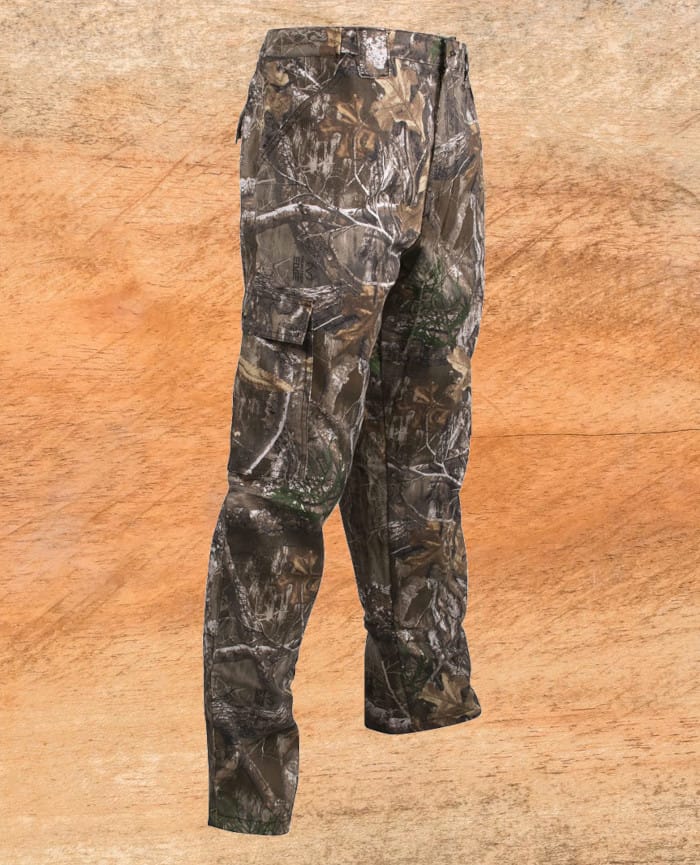
Dove hunting pants will share many features that are common to dove hunting shirts, including the following:
Lightweight but Durable
With pants, you’ll want them to be manufactured from a lightweight yet durable material to offer some protection from bugs, thorns, and the elements.
There are several popular fabric blends on the market that are used for warm-weather hunting, but the most common is cotton or a cotton/polyester blend. In addition, some of the more expensive outdoor clothing brands on the market will use unique fabric blends designed to shed water and wick moisture away from the body.
Treated for Bugs
Most dove hunting pants are thick enough to repel mosquito bites and flies, so they shouldn’t be an issue. However, with warmer weather, the concern is another type of insect that can be pretty dangerous, and I’m referring to ticks. Although technically, ticks are not insects. Technically, they fall into the arachnid family (like spiders.)
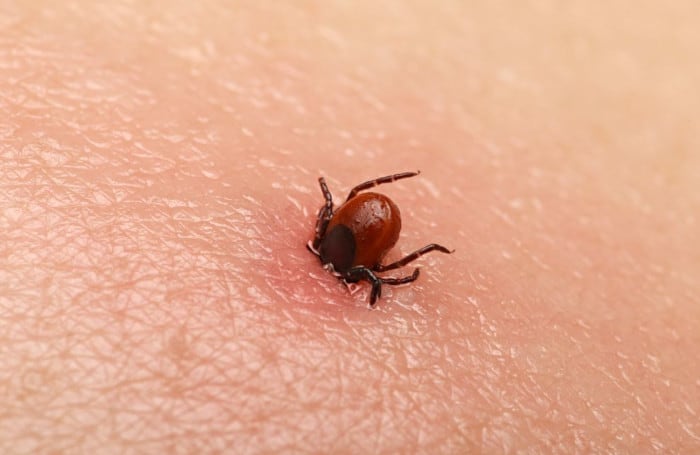
Ticks are a parasitic mite that feeds off the blood of other animals, including humans. Ticks can carry several serious diseases and viruses, including:
- Rocky Mountain Spotted Fever (which can be fatal if not treated)
- Lyme Disease
- Different versions of Encephalitis
- And many others
Ticks are no joke. Take it from a father whose youngest son spent a few days in the hospital due to Rocky Mountain Spotted Fever.
With pants, hunters really have a few options to address ticks:
- Buy pants that are pre-treated with a tick-repellant compound (which is usually DEET based)
- Treat pants post-purchase yourself with a tick-repellent chemical like DEET or Permethrin.
Be aware that neither approach is fool-proof and can have some potential side effects. For example, some people don’t react well to DEET-based products, and some have issues with permethrin.
I prefer to use permethrin and treat my dove hunting clothes in a mild permethrin solution and then leave them out to air dry. I then wash the clothes once more, and they are ready to go.
I spent a lot of time outdoors hunting and fishing, but with this permethrin treatment, I’ve only had one tick attached to me in the last eight years. (As I knock on wood for saying that)
Camouflage Pants
Like dove hunting shirts, I find that wearing camouflage hunting pants gives me the best results when dove hunting. However, you don’t have to wear camo pants because jeans or khaki-colored pants can also work.
However, I recommend camo pants as the patterns help break up your outline and hide your movements.
Dove Hunting Hat
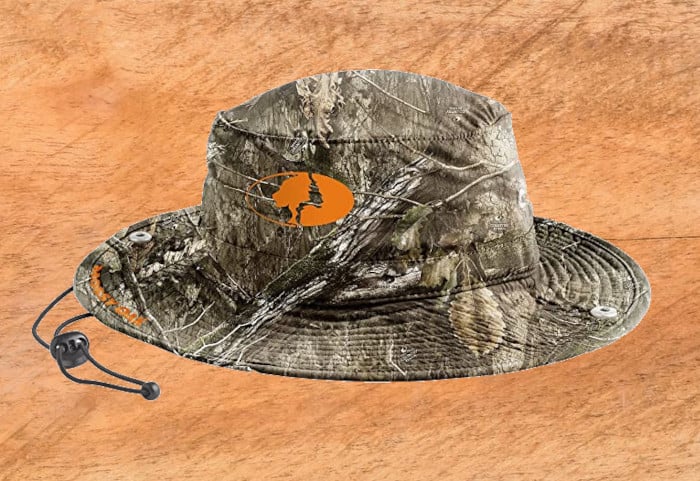
Another critical piece for dove hunting is a hat or head cover of some type.
A dove hunting hat serves several purposes, including:
Helps Protect the Head From the Elements Like Rain and Sun
Even with a full head of hair, the top of your head can still get sunburned. Since I’m a little older and already thinning on top, I have to wear a hat, or the sun will roast the top of my head.
A hat with a brim helps keep the sun out of your eyes and helps your vision. In addition, a brimmed cap reduces the glare from sunlight and improves your ability to see doves as they fly by.
Camouflage or Dark Colors are Always Best
Camouflaged or dark-colored hats help hide your face as doves approach and assist a hunter in blending into the background. Although a camo hat isn’t an absolute necessity for dove hunting, I’ve always felt that it certainly helps.
If you don’t want to use a camo hat, I would stick to dark-colored hats that help conceal your face and head. I suggest avoiding light-colored hats as doves are not entirely colorblind, so they can see light colors against a dark background.
Offers Some Protection Against Bugs
In case it isn’t obvious, I hate dealing with bugs while hunting. A hunting hat made from good quality material is generally thick enough to protect the top of your head from mosquito and fly bites. However, be careful of using a hat made from really thin material, as it may not be thick enough to stop a mosquito bite.
For example, I bought a Sitka camo hat on sale that was advertised as one of the lightest camo ball caps on the market. While it’s a nice hat, the material was too thin to repel mosquitoes, so the top of my head got eaten up on the opening day of dove season. Lesson learned from that experience.
Dove Hunting Vest
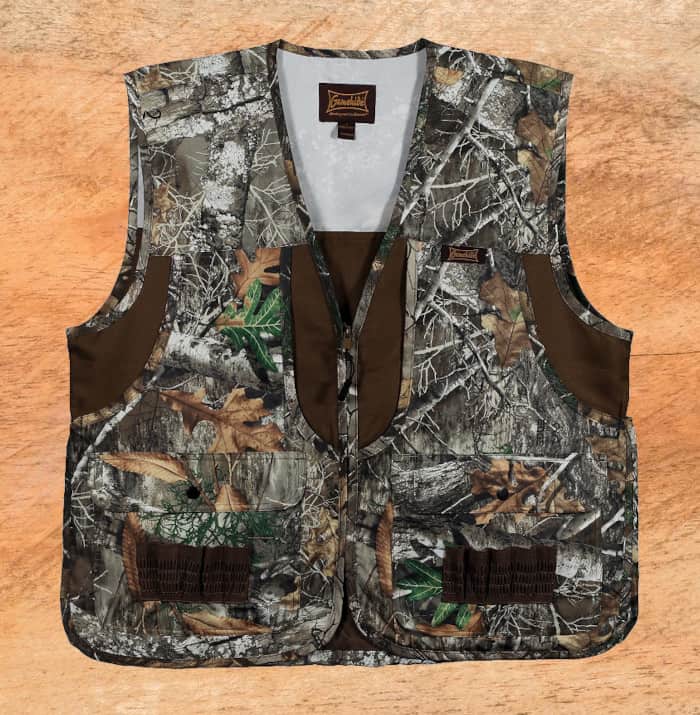
Another potential piece of apparel to consider when hunting doves is a dove hunting vest. Again, a hunting vest isn’t a requirement, as many dove hunters forgo a vest due to the heat. I typically don’t wear a hunting vest with doves, as I prefer to pull shells from a shell bag. However, I do wear hunting vests when hunting species like deer, squirrel, rabbit, and quail.
These are hunting vests designed for upland birds, including doves.
Hunting vests that work best for doves are lightweight models with a game pocket in the rear and two large front pockets for holding shells.
These vests are typically broken down into one of two styles:
Traditional Vests
A traditional bird hunting vest (like the one pictured above) is sleeveless and only covers the torso of the hunter. This style of dove vest generally has an attached game bag for carrying birds and several pockets for shells.
Bird vests are designed to be lightweight and may have some mesh built into the design.
Minimalist Vests
Minimalist vests are very much like they are named, as they consist of very few components. Most minimalist-style vests feature two narrow shoulder straps attached to front pockets and a game bag.
This style of vest may also come with a bird vest or bird bag.
Materials
A dove hunting vest is typically made of lightweight, durable materials designed to be comfortable and breathable. These materials usually include a combination of waterproof polyester and cotton blends that provide protection from the elements.
The ideal dove hunting vest will be lightweight enough to wear during warm weather and have enough pockets to carry gear like a dove call, shooting glasses, hearing protection, etc.
Dove Hunting Footwear
Another integral piece of dove hunting apparel is the appropriate footwear. For most hunters, the proper footwear means some sort of hunting boot. While you can undoubtedly wear footwear other than boots, I highly recommend hunting boots when hunting the elusive dove.
Hunting boots serve several purposes, including:
- Protecting the feet from the elements and rough terrain
- Most are waterproof or at least water-resistant.
- Can keep the feet warm during cooler temperatures.
- Offer traction in slippery conditions.
The ideal dove hunting boots will be lightweight and comfortable and offer decent protection for the feet.
Typically, most dove hunters will wear one of two types of hunting boots:
Traditional Hunting Boots
Traditional hunting boots are boot models made specifically for hunting or outdoor use. This boot style is typically 8 to 10 inches (or more) high and made from a durable material like leather, ballistic nylon, or a combination of other materials.
Most hunting boots are either insulated or uninsulated. The insulated models are built with insulation to keep the feet warm, and the insulation is typically a material called “Thinsulate.” The Thinsulate volume built into the boots determines their level of warmth. This number is generally listed in grams. Some common and popular volumes of Thinsulate include:
- 200 grams
- 400 grams
- 600 grams
- 800 grams
- 1000 grams and up
Since most dove hunting begins in warm weather, I recommend wearing uninsulated boots or boots with lower insulation levels. For example, I prefer uninsulated boots for warm weather dove hunting, but I have also used 400-gram boots as well.
I don’t recommend wearing boots with an insulation rating higher than 600 grams in warm weather because your feet will become overly warm or even uncomfortably hot.
Snake Hunting Boots
The other boot style that is popular for dove hunting is snake boots. Since dove season usually starts during warmer weather, especially here in the South, snakes are still out and moving around. While most snakes won’t bother people, the concern is really more geared toward venomous snakes. My home state of North Carolina is home to all four species of venomous snakes found in North America.
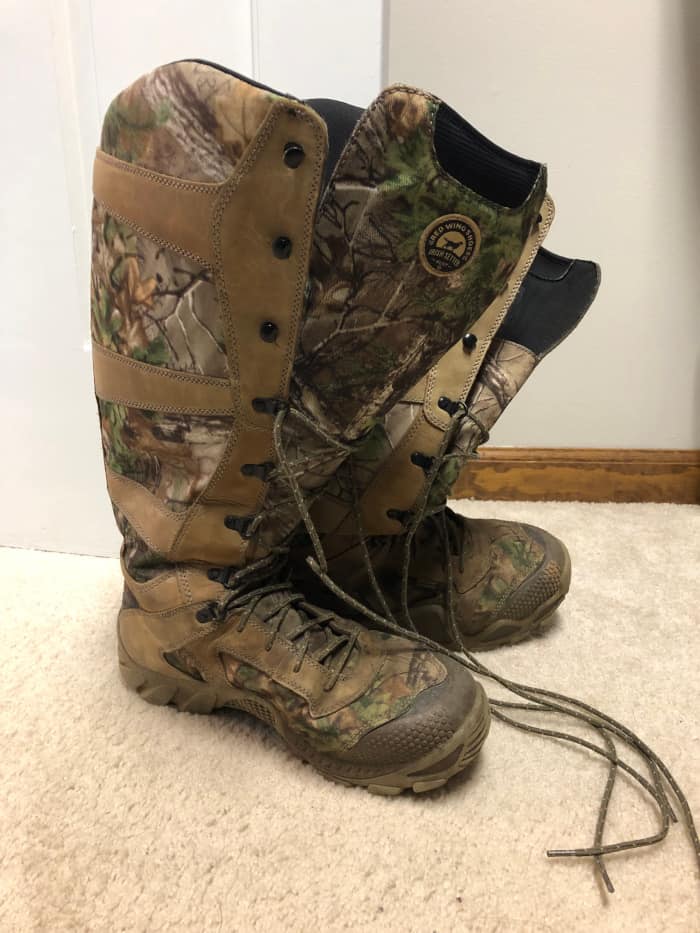
Snake boots are built to withstand or stop a bite from any snake, especially venomous snakes. While I certainly don’t want to get bitten by any snake, my concern with venomous snake bites is two-fold:
- The obvious health issues associated with a venomous snake bite.
- The financial impact of a venomous snake bite
Although I fully expect to survive a bite from most venomous snakes in the U.S., the financial costs become the more significant issue because the anti-venom to treat snake bites is ridiculously expensive. To compound matters, most insurance companies only pay a small amount of the cost associated with anti-venom.
For example, depending on the following factors:
- The severity of the envenomation
- Species of venomous snake
- Location of the bite on the body
Before insurance coverage kicks in, the hospital bill from venomous snake bites can range from $50,000 to $400,000. Even after the insurance coverage, many snake bite victims still end up owing several thousand dollars. I’ve written about this specific snake bite incident before on this website, but I have a customer at my day job that was bitten by a rattlesnake in Georgia over a Labor Day weekend hog hunt. After his insurance paid “their part” of the medical costs, he still owed almost $68,000 out of pocket.
Do any internet search about the cost of a venomous snake bite, and you’ll see many similar stories.
For these reasons, I prefer to wear uninsulated snake-proof boots while dove hunting. Now, it’s entirely possible that a standard pair of hunting boots may be thick enough to repel a snake bite, but I prefer to err on the side of caution.
And before you say or think, “Oh, I’ll never get bitten by a snake,” consider this fact: the CDC estimates that 7000 to 8000 people are bitten by venomous snakes annually in the United States, and those bites lead to an average of 5 fatalities per year.
In addition, before you think it can’t happen to you while dove hunting:
My father had a childhood friend bitten by a rattlesnake while dove hunting just outside of Hendersonville, N.C. His friend was hunting in canvas-style shoes (not boots) and accidentally stepped on the snake before it started rattling. Unfortunately, it struck him in the foot, and its fangs penetrated the thin canvas shoe. Even though it was a smaller-sized rattlesnake, and my dad and his friends were able to get him to a hospital in less than an hour, his friend ended up losing two toes to the bite.
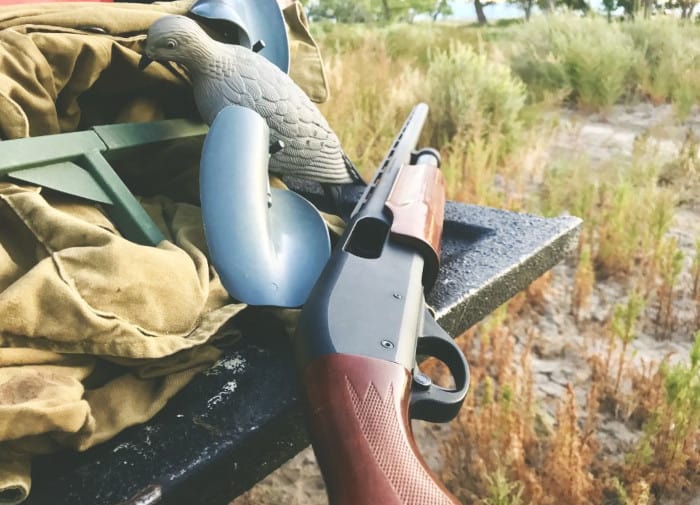
Other Dove Hunting Gear
While the clothing items I mentioned above are the clothing basics, here are a few other pieces of gear or accessories that you may want to also consider bringing:
Hunting License
In all the excitement of preparing for opening day, the most common item that hunters seem to forget is an up to date hunting license. And that can make for a really bad day if you happen to come in contact with a wildlife resource officer or game warden.
Make sure you have a valid hunting license on your person you hit the dove field on opening day.
Eye Protection
Another important item to pack for dove hunting: eye protection. For most hunters, eye protection will be either a pair of shooting glasses or, at a minimum, a pair of sunglasses.
Shooting glasses protect your eyes from a number of potential hazards, including:
- Glare from the sun
- Wind
- Debris
- Shotgun pellets from an errant shot or pellets that fall from the sky
- Ejected shotgun shells or other flying debris associated with shooting a shotgun
Hearing Protection
The average 12 gauge shotgun generates somewhere between 150 to 160 decibels when fired. According the the CDC, any sound level of 70 decibels repeated over an extended period can cause hearing loss, and any noise above 120 decibels can cause hearing damage. Given the normal volume of shots fired when dove hunting, its not hard to understand the importance of wearing some type of hearing protection in the dove field.
The most popular form of hunting hearing protection is ear plugs and ear muffs. Between passive or electronic hearing protection, I prefer electronic ear plugs because I like being able to hear things around me.
FAQS
Here are some frequently asked questions that are associated with a discussion about what to wear dove hunting:
Can I wear blue jeans to hunt doves?
You certainly can wear blue jeans for hunting doves. The only drawback is that the blue color may not do a very good job of helping camouflage you from the doves. However, as a species, mourning doves are not entirely colorblind, so they can differentiate between colors. This is one reason that most states do not require any hunter orange or safety clothing for hunting mourning doves.
Do I have to wear camo to hunt doves?
No, you do not specifically have to wear camouflage to hunt doves. If you decide not to wear camo, I suggest wearing some dark-colored clothing or brownish clothing to help blend in with the terrain. However, I firmly believe wearing camouflage clothing will increase your odds of a successful dove hunt.
Should I wear snake chaps on the opening day of dove season?
The decision to wear snake chaps or snake boots while dove hunting is a personal one. Since most dove seasons open sometime in September, there’s still a chance that the weather will be warm enough for snakes to be active. If you find that snake chaps make you too hot, consider transitioning to snake gaiters, as they are smaller and generally weigh less than chaps.
Since I have no interest in the health and financial issues associated with a venomous snake bite, I wear snake boots or snake gaiters for dove hunting.
What’s the best hat to wear for dove hunting?
Almost any cap or hat will do as long as it has a bill to keep the sun out of your eyes and helps hide your face. I prefer a baseball-style camouflage hat, but any dark-colored hat will work. I definitely recommend wearing a hat to protect your head from the sun and help you stay hidden from sight.
Can I dove hunt in shorts?
It’s a free country, so you absolutely can hunt doves in shorts. However, I strongly recommend wearing long pants instead because they offer protection from thorns and bushes, bugs, and the elements. In addition, several lightweight styles of long hunting pants on the market are designed for warm-weather hunting.
Do I have to wear blaze orange or hunter orange clothing?
Most states do not require a hunter to wear any blaze orange clothing or hunter safety clothing for dove hunting. However, I strongly recommend checking the regulations in your state before opening day.
Final Thoughts
Hopefully, you found this information helpful as you decide on your dove hunting apparel. Again, I want to reiterate that none of the items I discussed above are required for a dove hunter. However, I firmly believe these clothing items will significantly increase your chances of a successful hunt.
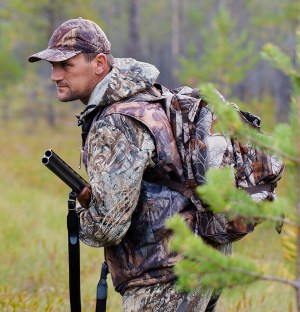
Born and raised in the North Carolina foothills, Andy was introduced to the outdoors at a very young age. Like most beginning hunters, he started out hunting small game like rabbits and squirrels, then graduated to larger species like Whitetail Deer. Although he’s an avid deer and turkey hunter, he still enjoys hunting small game as well. Andy has worked in the hunting and fishing industry for nearly 25 years.



